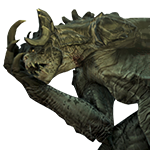tfw you make a thread about guns and the medieval weaponry nerds take over with a spear x sword debate
Well it kind of getting annoying when you read from a guy who thinks the most important part about using a sword are your muscles when in fact it is your coordination and skill. Also his inability to accept that modern weapons need just as much strength though due to other reasons.

> coordination and skill are what you need for the sword
> strength is for using guns
Contrarian Kodex at its worst

The discussion was in part about what would enable you to penetrate armor with a melee weapon. When you say 'coordination', what do you mean in this context? What do you mean by 'skill' in this context?
As for the reasons why strength is
just as important with modern weapons as it is for punching through armor with a melee weapon, plz elaborate on those 'other reasons'.
I see you really earned that tag considering I never claimed you need just strength to wield a gun, just that the requirement are pretty similar to wielding a sword and in fact most melee weapons.
Why is strength important for guns? Well, dumbfuck, the average assault rifle is heavier than many melee weapon, depending which specifically you compare them to though, as I have shown earlier. Furthermore if you had ever shot a gun while standing or kneeling with no support you would know that it is difficult to do so for any even slightly extended period of time since your arms will tire quickly, not just from the weight but also from the recoil. Then of course you are required to carry around sufficient ammunition, and no, a single clip won't get you far. In fact infantry rarely gets a kill on anything but semi or full auto fire requiring copious amount of ammunition. Estimates from the Vietnam war showed that the average infantry man expended roughly 10.000 bullets for a kill. Sounds ridiculous? Yeah try to hit something camouflaged on the move in a fucking jungle during night, not to mention stuff like suppression fire. So all in all yeah, modern rifles and especially they heavier ones like assault rifles, machine guns and certain sniper rifles like anti material rifles need just as much strength, maybe even more depending on the situation, whether you have to carry them around for extended periods of time especially in a readied stance.
Since you are too dense to understand, because I already elaborated upon that earlier, swords are piss poor at penetrating armor. So poor that even a gambeson will provide sufficient cut protection and you would have to hit the exact same spot multiple times against a defending opponent, which is why when wielding a sword, and in fact most weapons, you need finesse, skill and good dexterity at least as much if not more so and strength above the level of a fit guy is of little to no value because you will not penetrate armor in a single blow with it, period. You'd be much more likely to chip or break your sword before that happens.
A bog standard one handed sword is actually a fairly light weapon usually weighting between around a kilo or less. Common misconception among the D&D fantards is that longswords are a one handed weapon. They were in fact not. But even those longswords usually weighted less than 1.5 kilos, so even those were way below the average weight of an average assault rifle like the G3 or G36. They were by and large also well balanced and therefore easy to maneuver. Other weapons like axes and maces are a bit heavier, but the main reason they require more strength is because they are not as well balanced and require more strength to maneuver. Due to this they were also more tiring and consequently less frequently used. Back to swords, the most common way to get a solid strike in was to go for unprotected areas. As I have pointed out earlier, while you were too busy felating to your D&D fantasies about bulging muscles penetrating "armor" instead of reading and comprehending what I wrote, swords where so pitiful at penetrating armor that people learned a special way to fight with swords called "half swording". Does a dumbfuck like you even understand what that means? It means they effectively shortened the range of the sword to get more penetrating power, turning it into a an improvised spear, or , alternatively, into a basic club hammering the opponent with the hilt.
Here a short video why half swording was used, apart from penetrating armor:
Notice how he said "Swords don't cut armor". This is a general sentiment among most people studying medieval warfare both in practical terms and just academic terms. So again, strength is not nearly of as much value as you want to assign it to. Oh and as you might have noticed, those two who are elaborating about half swording are far from muscular juggernauts and they practice HEMA.
As pointed out earlier, swords were not even the most used weapon, neither were axes or maces. Spears and similar weapons were at all times one of the most common weapons. Why? Range and it made it easy to keep opponents at bay and also good against cavalry. Even now we can still turn an assault rifle into a spear by attaching a bayonet and this was still relatively commonly used in the major wars of the previous century though I am unsure how common it is the past decade or two. Furthermore something pointy is more effective to penetrate armor including gambeson, leather and chainmail in comparison to slashing weapons like swords.
The laws of lalaphysics that absolutely prohibit a sharpened blade brought down with whatever amount of force to break through interlocking small rings of metal, let alone pass on any energy to the human being inside that armor.
Did I ever claim that? No. Only that you can't cut through chainmail with a blade designed for cutting.
The discussion at large was about how to do damage in close combat to someone wearing armor. The claim that you have to penetrate the armor wasn't mine.
Chainmail was great protection against cuts, and it did its job well in that regard. People wearing chainmail didn't suffer from cutting wounds to their protected areas.
Evidence? Or at least logical argumentation? "Chainmail was designed to protect against cuts so you needed a weapon that was designed to defeat that design" isn't an argument for anything except on paper (very thin paper).

No the discussion was about whether you need a lot of strength to wield a melee weapon effectively and how beneficial more strength is. That and comparing the amount of strength needed to wield guns effectively by comparison. The matter of fact is that swords are poor weapons for impact damage in comparison to other weapons like maces and axes. No one claimed you deal no damage when hitting an armored opponent with a sword but it pales in comparison to what you can accomplish if you hit an unprotected spot with a cutting weapon. In fact trying to deal damage through armor is more likely to chip your sword, or break it in rare cases, then it would deal significantly more damage. And yes armor was great against cutting, especially swords. More strength was not of much value since the most dangerous aspect of the sword, slashing open a major artery or multiple blood vessels in a long gash, are effectively neutralized. Plate armor was basically impenetrable which is why half swording was used, as I have mentioned multiple times already, though with you it seems to fall upon deaf ears.
Cutting also does not require much strength. Anyone who has accidentally cut himself while shaving can attest to that.















